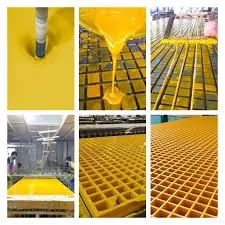
-
 Afrikaans
Afrikaans -
 Albanian
Albanian -
 Amharic
Amharic -
 Arabic
Arabic -
 Armenian
Armenian -
 Azerbaijani
Azerbaijani -
 Basque
Basque -
 Belarusian
Belarusian -
 Bengali
Bengali -
 Bosnian
Bosnian -
 Bulgarian
Bulgarian -
 Catalan
Catalan -
 Cebuano
Cebuano -
 China
China -
 China (Taiwan)
China (Taiwan) -
 Corsican
Corsican -
 Croatian
Croatian -
 Czech
Czech -
 Danish
Danish -
 Dutch
Dutch -
 English
English -
 Esperanto
Esperanto -
 Estonian
Estonian -
 Finnish
Finnish -
 French
French -
 Frisian
Frisian -
 Galician
Galician -
 Georgian
Georgian -
 German
German -
 Greek
Greek -
 Gujarati
Gujarati -
 Haitian Creole
Haitian Creole -
 hausa
hausa -
 hawaiian
hawaiian -
 Hebrew
Hebrew -
 Hindi
Hindi -
 Miao
Miao -
 Hungarian
Hungarian -
 Icelandic
Icelandic -
 igbo
igbo -
 Indonesian
Indonesian -
 irish
irish -
 Italian
Italian -
 Japanese
Japanese -
 Javanese
Javanese -
 Kannada
Kannada -
 kazakh
kazakh -
 Khmer
Khmer -
 Rwandese
Rwandese -
 Korean
Korean -
 Kurdish
Kurdish -
 Kyrgyz
Kyrgyz -
 Lao
Lao -
 Latin
Latin -
 Latvian
Latvian -
 Lithuanian
Lithuanian -
 Luxembourgish
Luxembourgish -
 Macedonian
Macedonian -
 Malgashi
Malgashi -
 Malay
Malay -
 Malayalam
Malayalam -
 Maltese
Maltese -
 Maori
Maori -
 Marathi
Marathi -
 Mongolian
Mongolian -
 Myanmar
Myanmar -
 Nepali
Nepali -
 Norwegian
Norwegian -
 Norwegian
Norwegian -
 Occitan
Occitan -
 Pashto
Pashto -
 Persian
Persian -
 Polish
Polish -
 Portuguese
Portuguese -
 Punjabi
Punjabi -
 Romanian
Romanian -
 Russian
Russian -
 Samoan
Samoan -
 Scottish Gaelic
Scottish Gaelic -
 Serbian
Serbian -
 Sesotho
Sesotho -
 Shona
Shona -
 Sindhi
Sindhi -
 Sinhala
Sinhala -
 Slovak
Slovak -
 Slovenian
Slovenian -
 Somali
Somali -
 Spanish
Spanish -
 Sundanese
Sundanese -
 Swahili
Swahili -
 Swedish
Swedish -
 Tagalog
Tagalog -
 Tajik
Tajik -
 Tamil
Tamil -
 Tatar
Tatar -
 Telugu
Telugu -
 Thai
Thai -
 Turkish
Turkish -
 Turkmen
Turkmen -
 Ukrainian
Ukrainian -
 Urdu
Urdu -
 Uighur
Uighur -
 Uzbek
Uzbek -
 Vietnamese
Vietnamese -
 Welsh
Welsh -
 Bantu
Bantu -
 Yiddish
Yiddish -
 Yoruba
Yoruba -
 Zulu
Zulu
Fiberglass Stack Liner Applications and Benefits for Industrial Emission Control Solutions
The Benefits and Applications of Fiberglass Stack Liners
In the industrial world, efficiency and durability are paramount. One critical aspect of many industrial processes is the management of emissions and the protection of equipment from corrosive environments. This is where fiberglass stack liners come into play. These innovative materials are increasingly being utilized in various applications, providing significant benefits over traditional lining options.
What are Fiberglass Stack Liners?
Fiberglass stack liners are composite products made of reinforced plastic materials, specifically designed to line the interior of industrial stacks, chimneys, and other exhaust systems. These liners are engineered to withstand extreme temperatures and corrosive gases, making them ideal for applications in power plants, waste incinerators, and manufacturing facilities.
Superior Corrosion Resistance
One of the primary advantages of fiberglass stack liners is their superior resistance to corrosion. Traditional materials such as metal and concrete can deteriorate over time when exposed to harsh chemicals and high temperatures. In contrast, fiberglass is inherently resistant to rust, scaling, and chemical reactions, ensuring a longer lifespan and reducing the need for frequent replacements. This property not only enhances the durability of the stacks but also minimizes maintenance costs for operators.
Lightweight and Easy to Install
Fiberglass materials are significantly lighter than conventional lining options, making them easier to handle and install. Reduced weight translates to lower transportation costs and less structural support required for the stacks. Additionally, the installation process for fiberglass liners is typically faster and less labor-intensive. This efficiency is particularly beneficial for industries aiming to minimize downtime during maintenance or upgrades.
Thermal Insulation Properties
fiberglass stack liner

Another prominent feature of fiberglass stack liners is their excellent thermal insulation properties. By reducing heat loss, these liners help improve the overall energy efficiency of the exhaust system. This can lead to decreased fuel consumption and lower operational costs for industries, including power generation facilities that strive for continuous efficiency improvements. In some cases, enhanced insulation can also contribute to reducing greenhouse gas emissions, aligning with global sustainability goals.
Versatile Application Range
Fiberglass stack liners can be used in a variety of applications beyond traditional industrial stacks. They are effective in lining various types of ductwork, process equipment, and even wastewater treatment plants. The versatility of these materials means they can adapt to various operating conditions and environments, from high-temperature settings to chemically aggressive atmospheres.
Environmental Benefits
Investing in fiberglass stack liners can also yield environmental benefits. Given their longevity and resistance to corrosion, these liners help prevent leaks and emissions that could harm the environment. By improving the efficiency of emission control systems, they help industries comply with increasingly stringent environmental regulations. Reducing the environmental footprint of industrial operations is a critical responsibility that fiberglass stack liners facilitate.
Cost-Effectiveness
While the initial investment in fiberglass stack liners may be higher than some traditional options, the long-term savings they provide can make them a more cost-effective solution. Their durability, lower maintenance requirements, and energy-saving properties help businesses offset initial costs over time. Industries are increasingly recognizing that integrating fiberglass technology can lead to significant overall savings and operational efficiencies.
Conclusion
In summary, fiberglass stack liners represent a pinnacle of engineering innovation, offering multiple advantages for various industrial applications. Their corrosion resistance, lightweight nature, thermal insulation properties, and environmental benefits make them an ideal choice for managing exhaust systems and improving overall efficiency. As industries continue to seek sustainable and cost-effective solutions, fiberglass stack liners are sure to play a vital role in transforming how we approach equipment durability and environmental stewardship. Whether in power generation, waste management, or manufacturing, the case for adopting fiberglass stack liners is compelling and increasingly necessary in today’s environmentally-conscious industrial landscape.









